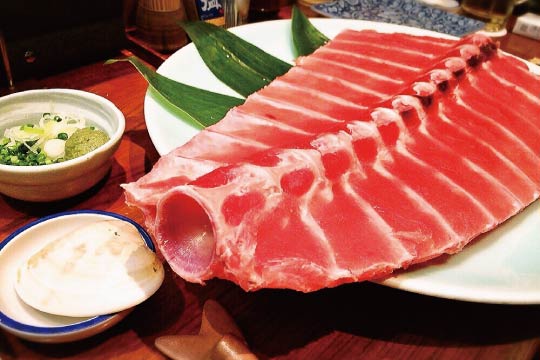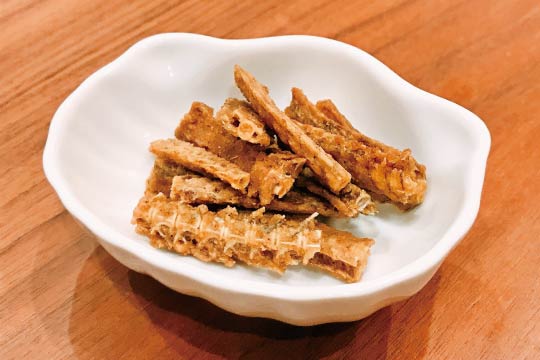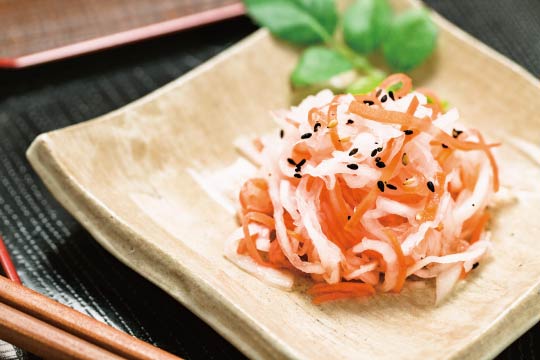News & Blogs
In this blog, we touch on diverse topics about Japanese food cultures, practices together with the culinary secret, TREHA®, and its important role in the Japanese food industry. We hope our blog helps you obtain in-depth knowledge of the secrets and science behind Japanese cuisine, shared from our kitchen, to yours.
Today, we would like to present an interview with Chef Andy Matsuda, CEO and Chief Instructor of Sushi Chef Institute (SCI) in Torrance, California. The interview took place on August 26th, 2021.
Chef Andy founded Sushi Chef Institute (SCI) to pursue his goal to foster culinary professionals who understand and prepare Japanese-style sushi outside of Japan in 2002. SCI has trained more than 1,800 sushi chefs actively working in 35 countries, including the US, Netherlands, Denmark, Hong Kong, Taiwan, and Argentina.
With the mission of "inspiring the world with the essence of traditional Japanese cooking skills and knowledge,” Chef Andy is actively engaged in professional training, sushi catering services, workshops, consultation for opening restaurants to the graduates and public. His goal is to nurture the Japanese traditional sushi culture and educate professionals who relay the tradition onward.
At the age of 20, Chef Andy took a backpacking trip through 16 nations, including the European countries, the US, Canada, wanting to see the development of sushi culture outside of Japan. He discovered Los Angeles had the most advanced sushi culture through his journey. After training to be a sushi chef in Japan, Chef Andy moved to the US at the age of 25 and witnessed a high demand for sushi chefs and shortage in the US, driving him to establish the SCI. In addition to running the school, Chef Andy leads the sushi and Japanese cuisine team on the Holland America Line’s cruise ships as a member of the Holland America Line Culinary Council® consists of eight experts. Chef Andy was named among "the 100 Japanese people the world respects" (Newsweek Magazine Japanese Edition) in 2007. Subsequently, in 2019, the Ministry of Agriculture, Forestry and Fisheries of Japan appointed Chef Andy to be "Japanese Cuisine Goodwill Ambassador."
In 2020, Hayashibara Co., Ltd., the manufacturer of TREHA®, announced the sponsorship agreement with Sushi Chef Institute (SCI). Click here for details.
“I live by the word ‘mottainai’… I am committed to treasuring every bit of this massive fish.”
Team TREHA®/Mari: You started a catering service that utilizes tuna from nose to tail. The concept is intriguing from a food sustainability point of view. What made you start this service?
Chef Andy: As you all know, sushi is luxurious food. A chef chooses only a tiny, best portion of ingredients, regardless of how precious they are. For instance, only one slice of a sizeable tuna becomes fatty tuna (toro) sushi topping. This practice applies not just to tuna but to other fish such as sea bream and Spanish mackerel. Sushi is all about creating a delicate balance to provide the best possible experience to a customer. The customer receives the small yet the best of the best in the optimal timing and serving portion accentuated by seasonal tastes. This is total luxury.
This luscious culinary practice deduces the question, “What becomes of the rest of this 800-pound giant after only a half-ounce is taken?”
In the US, wholesalers and retails get stuck with heads, bones, and tails that would remain unsold or unused.
On the contrary, anglers and retailers would value such parts in Japan. For example, tuna has unique cuts; the crown of the head called Tsunotoro, the collar above the gills and below the head, known as the Kama, and the meat around the chin. They are my favorite delectable cuts. Do you know the most flavorful part of blowfish is the lips? Yellowtail and salmon also have tasty belly parts with a plump, jelly-like texture. Those are just a few examples of hidden treasures often neglected. However, Japanese Izakaya and casual dining prepare and serve flavorful dishes using these parts. By the way, though rarely found, fish skin makes a pleasant appetizer by deep-frying.
Tuna is edible from head to tail. Even internal organs and eggs become palatable with proper techniques. Whether to put extra effort or not determines the fortune of the supplementary parts becoming enjoyable items or discarded. Going the extra mile ensures delicious dishes. "Mottainai” is a Japanese word directly translated into “too good to waste” and is best described for wasting more than half of a fully grown tuna that survived the ocean’s cutthroat environment. I live by the word “mottainai,” also referring to the mindset of “reduce, reuse, and recycle.” I am committed to giving extra care to treasure every bit of this massive fish by making it edible up to 80-90%.

Team TREHA®/Mari: I have had grilled marrow bones at a restaurant, but the thought of having uncooked tuna bone marrow never occurred to me. Isn't it fishy?
Chef Andy: The bone marrow of tuna doesn’t have any distinct tastes or odors. It becomes fishy only when mixed with blood. My tuna bone marrow shooter is seasoned with apple cider vinegar, shio koji, cold sake, and garnished with a quail egg. You can create an attractive item by incorporating your ideas and seasoning techniques.
The Japanese use sea breams from head to tail besides tuna, which I mentioned earlier. Even bones can be utilized as deep-fried appetizers or umami-loaded soup stock. The old-time Japanese did their best to make the most of the ingredients without wasting them.

“Excess ingredients usually destined to be thrown away can be delightful dishes with a bit of time and effort.”
Team TREHA®/Mari: There is much to learn from ancient wisdom. Do you have any practices to reduce food loss or waste at your school? Alternatively, would you tell us any daily routines which result in such practices?
Chef Andy: Our classes produce a lot of leftovers since students learn various techniques, including sushi roll making and sheet cutting (katsuramuki) daily. I do my best to cook with these leftover ingredients to give them another life. For example, daikon radish leftover becomes Sunomono, a crunchy Japanese salad marinated with vinegar after salted and tossed to draw out moisture. I make this for my friends and vendors to enjoy at home. Excess ingredients usually destined to be thrown away can be delightful dishes with a bit of time and effort to make them tasty. If the leftovers are freezable, I make them freezer-ready using some techniques and finish them up within a few months.
These days, an increasing number of chefs make meals for schools and facilities alike using commercially imperfect food ingredients. I hope this trend continues to develop even further.

In the next blog, Chef Andy will talk about his future perspective. Stay tuned!
Click here for 'Exclusive interview with Chef Andy Matsuda of Sushi Chef Institute in Torrance, California: 1 of 3.'
Click here for 'Exclusive interview with Chef Andy Matsuda of Sushi Chef Institute in Torrance, California: 3 of 3'
Did you find this blog interesting?
Please share it with your friends in the food service industry.
We regularly update the blog about the food culture of Japan, where TREHA® was discovered for culinary applications.
Click here and send us a message to subscribe.
Or hit us up on Instagram @trehalose_sensei!


